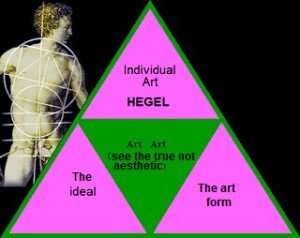
Aesthectic of Hegel
I was interested in studying the issue of religion in Hegel, motivated by the book of Paul Ricoeur “Lectures on Ideology and Utopia” (1986), and also the question of Misericordy and Fraternity which came to be published in a book about “Misericórdia e Fraternidade” made by a group of brazilian´s intellectuals willing to put a scholarly light on the papal´s Bull “Misericordiae vultus” launched in connection with the Jubilee year of Misericordy in Catholic Church.
by the book of Paul Ricoeur “Lectures on Ideology and Utopia” (1986), and also the question of Misericordy and Fraternity which came to be published in a book about “Misericórdia e Fraternidade” made by a group of brazilian´s intellectuals willing to put a scholarly light on the papal´s Bull “Misericordiae vultus” launched in connection with the Jubilee year of Misericordy in Catholic Church.
.
I come across a quote in an old volume of Hegel thinkers collection on the aesthetic: “For us, art is no longer the highest form that the truth chooses to assert its existence” (p. 126), and more ” in the hierarchy of the means used to express the absolute, religion and stemmed culture of reason hold the highest degree, higher than the art “(p. 43) and then a near death sentence:” the present tense conditions not they are favorable to art “(p. 44).
But then it would not be appropriate to ask: what kind of art has survived, or rather aesthetic we can say that is the aesthetic of today? I see two answers only outlined a paraphrased Hegel himself is from the “truly real,” although this separate the sensible reality and the reality of art, and the second existential: because you can not order the death of art since even in the silence of our existence, it remains alive inside of poets, artists and singers, although mambembes (popular circus) are there.
What is limited to Hegel, since “is a representation of a meaning that is not conjugated with the expression, the representation remains always a difference between idea and form” (p. 101), but which at the bottom is the idealist problem of art.
The idea that it is possible to abstract from reality the sublime, as if it were non-existent in the sensitive representation is contrasted by its “existence” since art expresses Being even nonexistent and paradoxically, because if there is an expression, it is sensitive, that is their condition of existence.
We are required to agree with Hegel: “To make the proper matter, will be up to the monstrous, disfigures to form, it is produced the grotesque” (idem), but all these traits posed by Hegel are but his denial of sublime, the attempted destruction of art and beauty, which confirm the existence “in the depths of all that, in art, can be entitled to call harmonious, the absurd and contradictory survives” (Adorno, T., Theory Aesthetics, p. 130).
Hegel, G. W. Aesthetics. Oxford: Clarendon Press, 1973. (for download) (pages of the brazilian edition).









